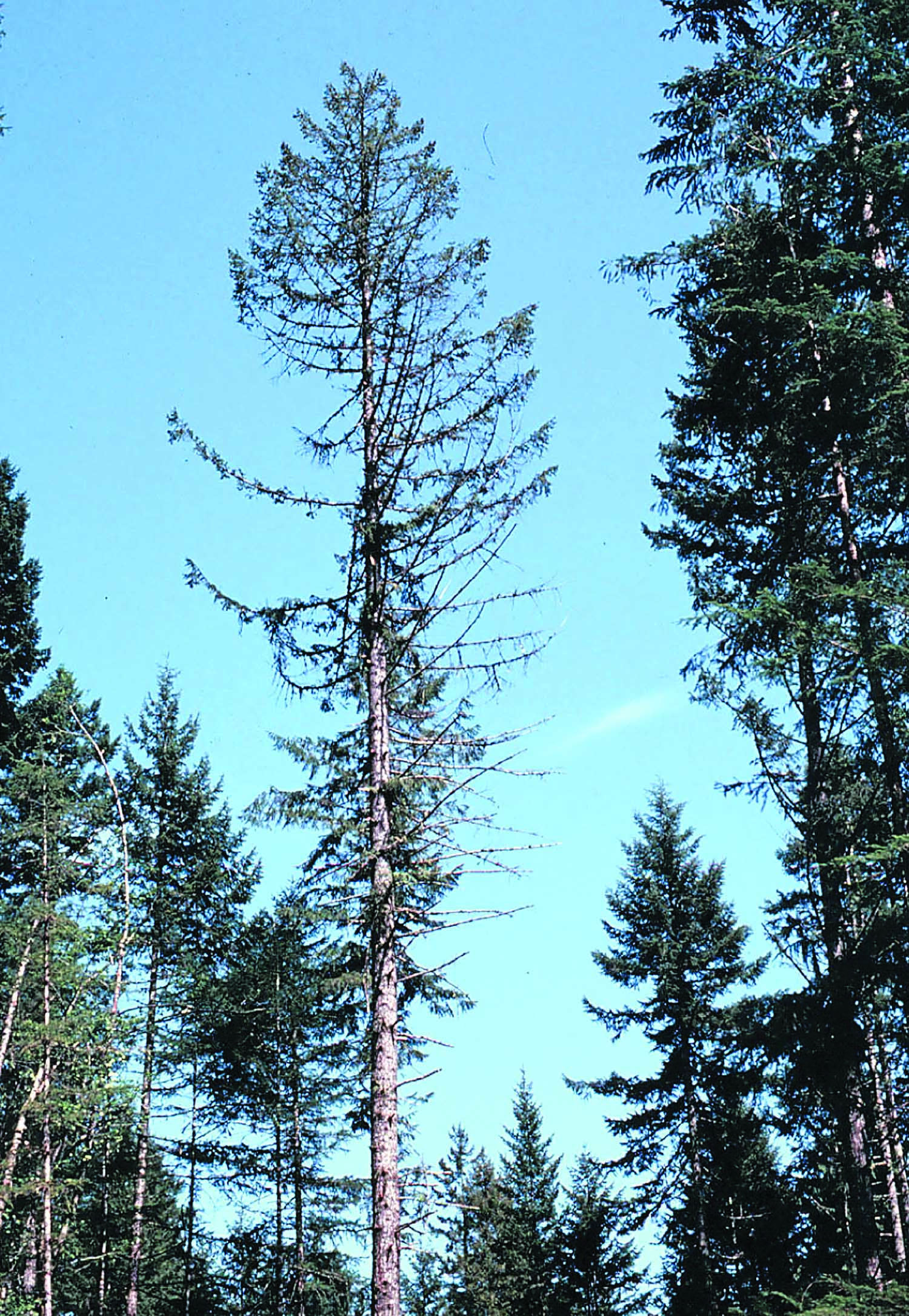Foresters are looking to hone their management of Douglas fir trees in the wake of a new state report that says a changing climate likely will worsen the spread of a root-devouring fungus.
A special panel commissioned by Washington Lands Commissioners Peter Goldmark to study the laminated root rot fungus published a study last month that suggested warming temperatures and more frequent droughts will make Douglas firs more susceptible.
The study was commissioned to see the potential future impacts of the fungus on the Douglas fir species that comprises most of the North Olympic Peninsula’s timber harvest.
“It’s definitely the dominant coniferous tree on at least the eastern half of the Olympic Peninsula — and in much of the western Peninsula, as well,” said Norm Schaaf, vice president of Merrill & Ring, the Peninsula timber and land-management company.
The DNR panel found that the root rot lowers the state’s annual timber harvest yields by 5 percent to 15 percent currently. That hit would increase as fungal infections of firs worsen, experts said.
“In the long term, having sites infected with root disease reduces productivity,” said Karen Ripley, DNR forest health program manager.
“If Douglas fir trees aren’t growing back, then it’s going to take longer to have another crop for the loggers to help harvest.”
The fungus rots the roots of Douglas firs, robbing the trees of nutrients and either killing them or leaving them weakened and vulnerable to pest attacks or wind damage.
The study calls Douglas firs a keystone species, valuable to the economy and ecology of the Northwest.
In 2012, Clallam and Jefferson counties produced 278,987,000 board feet of timber, according to the state Department of Natural Resources, most of which was Douglas firs.
The industry accounted for $26 million of the Peninsula’s $1 billion in total wages in 2012, according to the state Office of Financial Management.
“What you see in the numbers is that 5 [percent] to 15 percent hit,” Schaaf said.
“Now, if it gets worse, it’s going to be a bigger slice of that.”
The fungus remains in the soil after trees have been removed.
Foresters have been managing root rot for years, but a more epidemic spread could take a serious hunk out of the industry’s earnings, which make up a big part of the Peninsula’s economy.
“You do hit certain areas where you see a lot of trees with a lot of stump rot,” said Pete Dahlgren, a longtime logger with the Dahlgren Logging Co. in Forks.
Schaaf said common practice has been to pull the stumps of infected trees out of the ground, which removes the infection center.
Another alternative practice has been to plant rot-resistant species such as white pine, red alder or western red cedar on infected areas.
That, however, heightens market risks for loggers.
“In a lot of places, white pine is going to be the best alternative,” Schaaf said. “But there’s not really much of a market here for white pine, so you’re kind of gambling on whether or not you’re going to find a buyer.”
In January, Douglas firs sold for an average of $623 per thousand board feet, according to the Department of Natural Resources’ monthly mill price report.
White pines, meanwhile, sold for an average price of $389 per thousand board feet.
Goldmark called for the study in part because of the economic impacts of laminated root rot.
DNR estimated that timber revenues to the state’s public school and university trust took a $10 million hit because of rot-related reductions in yields.
The panel included scientists from the University of Washington, Washington State University, Weyerhaeuser Corp., the U.S. Forest Service, Canada and the Pacific Forestry Centre.
Academic retirements have left the state’s universities without researchers to study the pathology of forests, Ripley said. The panel recommended that the state Legislature address that gap.
Sen. Jim Hargrove, a Hoquiam Democrat who represents the 24th District in the state Legislature — which covers Clallam and Jefferson counties and part of Grays Harbor County — said he took special interest in the study as a forester but has not had time to review it during the current session.
“It’s something that definitely has significant impacts in the areas in which it occurs,” Hargrove said.
“It would be bad if it worsened.
“I plan to take a real in-depth look at the study when I get done with my day job here.”
________
Sequim-Dungeness Valley Editor Joe Smillie can be reached at 360-681-2390, ext. 5052, or at jsmillie@peninsuladailynews.com.


